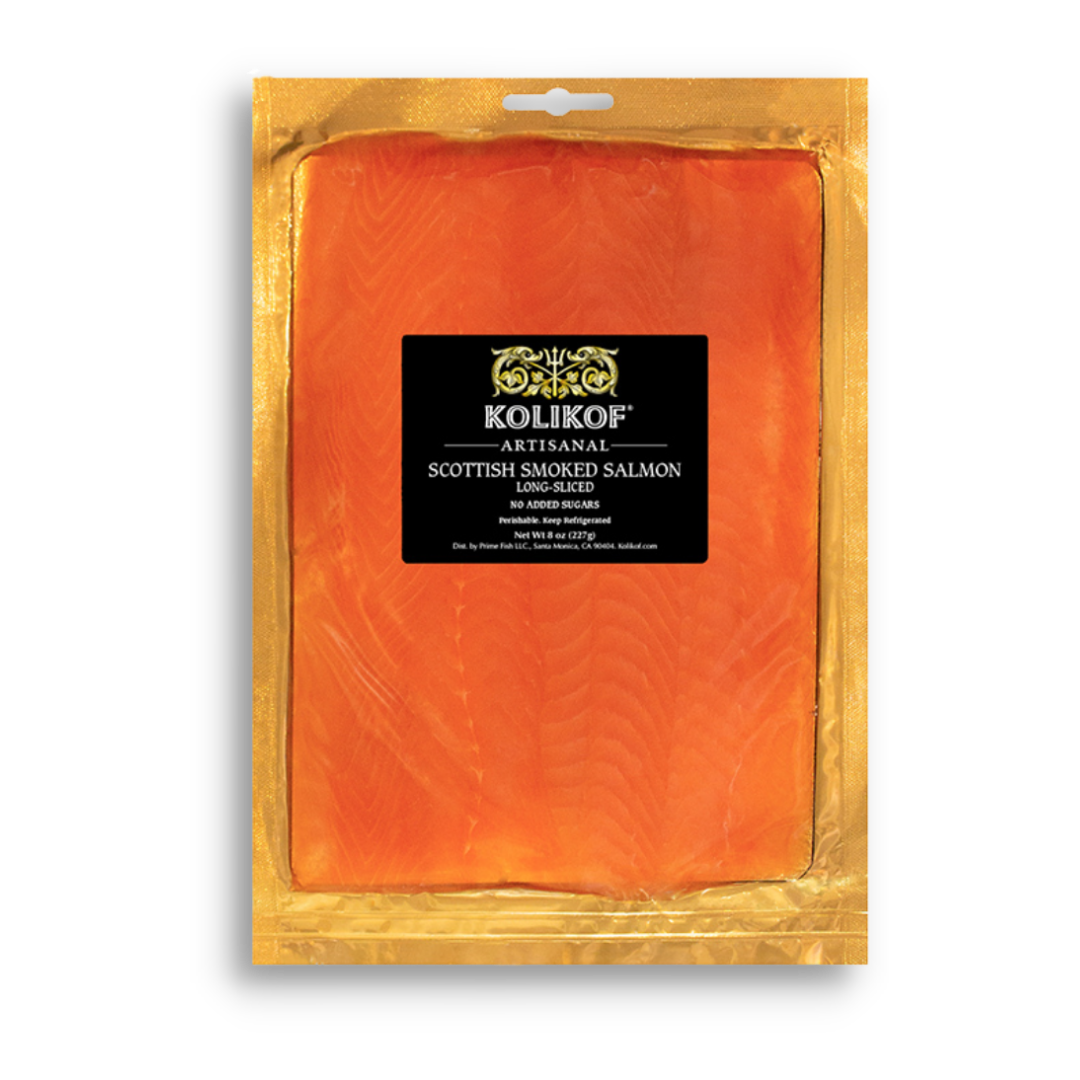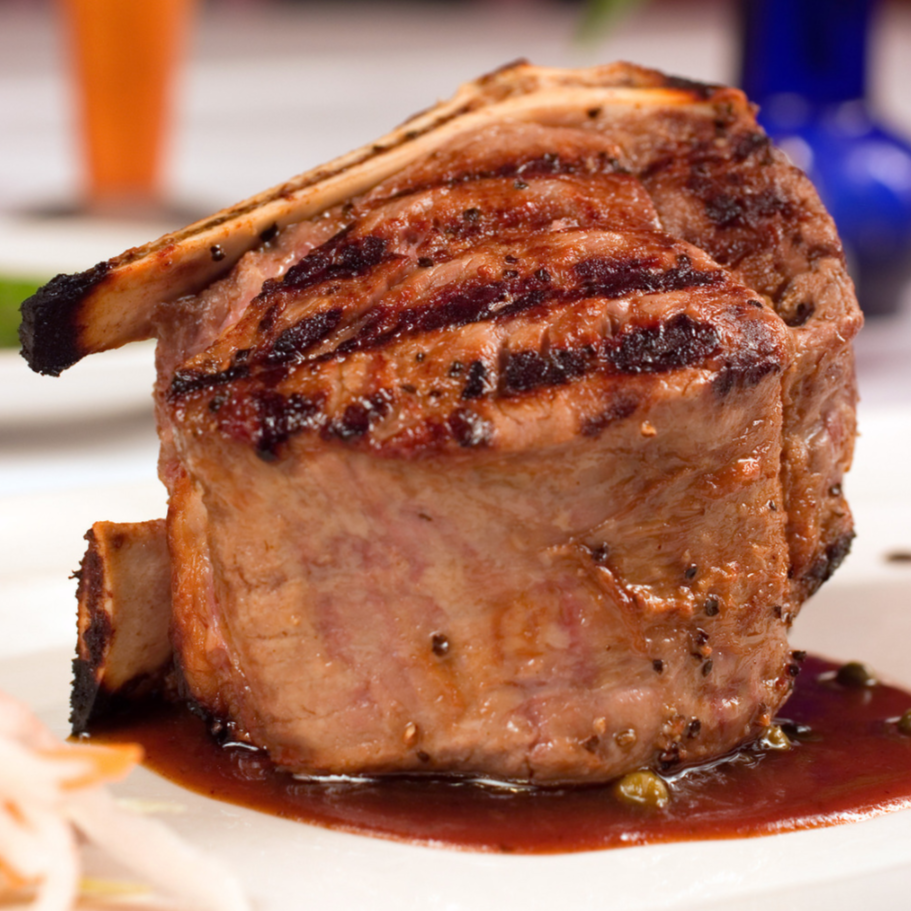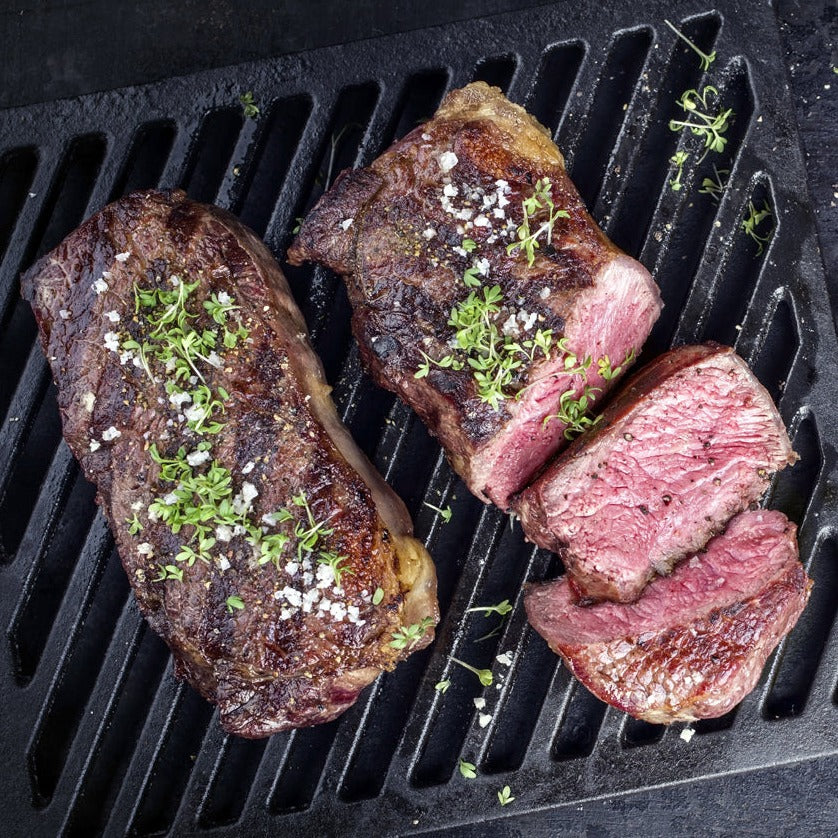What’s the Difference: Dry Aging vs Wet Aging Steaks?
What’s the Difference: Dry Aging vs Wet Aging Steaks?
There are two methods for aging beef, one is known as the wet-aging process and the other is known as the dry aging process. But what’s the difference? And does it matter which method you chose?
Dry aging and wet aging create vastly different results when it comes to the meat aging process, so read on to discover which one you should use!
The 7 Differences Between Dry Aging and Wet Aging
1. The Aging Process
Dry aged beef is aged by hanging the beef in a dry area which is kept at a low temperature just above freezing. The beef must be kept in these conditions for several weeks (up to 30 days), during which time the enzymes in the meat begin to destroy the connective tissue, effectively tenderizing the meat.
Wet-aged beef is aged by placing the beef in a vacuum-sealed container in a chilled environment (such as a fridge). The vacuum-sealed environment prevents any liquid from escaping the beef while the enzymes break down the tissue. While this process still takes two weeks, wet-aged beef can be transported in the vacuum-sealed package to its final location, making the process less cumbersome.

2. How Long it Has Been Used
Dry-aging beef has been used for centuries and is one of the oldest methods of preserving meat. Wet aging, though, is a newer method that humans have only used for a few decades.
3. How Safe It Is
Wet-aging beef has become very popular because it is mostly safe, and almost anyone can do it. As long as you have a vacuum sealer and know how long to leave the beef in it, you, too, can wet-age beef at your home.
Dry-aged beef, on the other hand, can be dangerous if not closely monitored. Because dry aged beef is hung in a room out in the open, there is a chance it could be contaminated by individuals entering the room, or worse, vermin. It is only recommended that those with a proper facility attempt dry aging a cut of meat.
4. Flavor
Now for the important part. Dry-aged beef gains a roasted, earthy, or nutty flavor as it ages. Wet-aged beef maintains its more rare taste and can occasionally taste a bit acidic.
It is also well known that dry-aged meat is more tender than wet-aged meat.
5. The Cuts You Can Age
Not all aging methods are available for all cuts of beef. During the dry aging process, the meat loses a lot of moisture, and hard pieces must be removed, so small pieces won’t work. If you try to dry age a small piece of beef, you’ll be left with nothing after trimming off the dry parts. Thus, dry aging is usually reserved for large cuts of meat or primal cuts like this dry-aged porterhouse from Kolikof’s.
Wagyu beef is one of the best and most popular cuts to dry age because of its fat marbling, which keeps the meat moist during the aging process.
As for wet aging, well you can age almost any cut of beef that you can fit in a vacuum sealed pouch!
6. Availability
Because wet-aging meat is easier and safer, it is a widely used method and you can find wet-aged beef almost anywhere. Dry-aged beef, however, is much more rare since it is only produced in certain locations.
If you’re itching to try a dry-aged steak, you’ll probably need to head online. Kolikof Gourmet and Caviar is one of a few websites where you can order tasty dry-aged prime beef right to your front door.
7. Cost
That brings us to the last difference between these beef-aging processes, how much you will pay for it. Dry-aged beef, because of its rarity and how long it takes, will cost much more than wet-aged beef.
Which is Better, Wet or Dry Aging?
Honestly, if you are a meat person, tasting a dry-aged steak will be like coming home to the gods; we aren’t kidding. There’s a reason that a premium cost is attached to dry-aged beef. But if you are just looking for a tasty steak for a weekday dinner, then wet-aged beef is good, too.
The Dry-Aged vs Wet-Aged Beef Challenge
Don’t believe us that dry-aged beef is better? There is a trend on the internet where individuals have been ordering a dry-aged and a wet-aged steak of the same cut, then cooking them using the same method, and taste testing them to compare.
At Kolikof Caviar and Gourmet, you can participate in the challenge when you order the Dry-Aged Prime Ribeye along with the regular Prime Ribeye. Then you can cook both on the same night and decide for yourself which is better!
How to Choose the Right Dry-Aged Steak
Want to try dry-aged steak but not sure where to start? The most important aspect of buying dry-aged meat is to acquire it from a reputable source. Kolikof Caviar and Gourmet is one of a few premium online butchers that offers dry-aged steaks at a reasonable price.
Once you have found a place to order, we recommend buying the nicest cut that you can afford or one you are familiar with. For example, if you normally consume ribeyes, then purchasing a dry-aged ribeye is a no-brainer for you. But for those with truly no idea, we recommend perusing our Wagyu selection for the perfect cut of Authentic A5 Japanese Beef to dry-age. We also recommend using a larger sized Porterhouse steak to experiment on. Both of these are delicious, large enough for sharing, and a great place to start your dry-aged meat journey.
Want to really dip your toes into something new? We highly recommend our Japanese A5 Wagyu and Caviar Box by Kolikof. With everything you need for a romantic and unique dinner at home, you will love tasting some of the best dry-aged beef along with some premium caviar.








